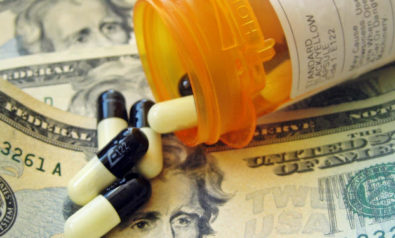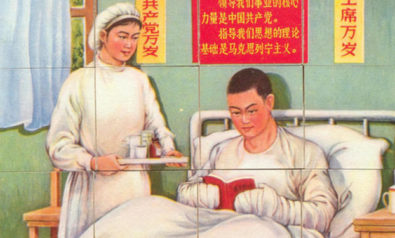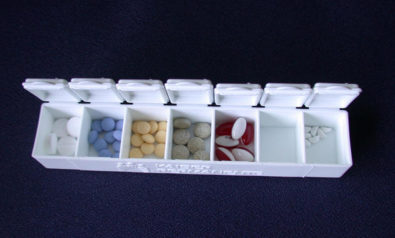Commentary on the supply and demand of medicine, its overuse, and the need to regulate and optimize the accessibility of medicinal drugs in the US and beyond. This is part two in a series of four articles. Please click here for part 1, part 3 and part 4.
Non-adherence to Medical Treatment
Underuse of properly prescribed medicines is common. However, the elderly are more likely to forget to take their medicine as prescribed, stop when they have an adverse drug reaction or interaction, think they are well when they are not, or wish to save money by stretching their medicines. A major difficulty with reading prescription labels and instructions is sufficient to discontinue the medicine often without knowledge of the physicians.
A 2005 Wall Street Journal survey revealed that 33% of adults stated they are often or very often non-compliant with their medical treatment. A non-compliance rate of 50% was due to concerns about the safety of the medicine itself, 43% believed their medicines were unnecessary, and 64% simply forgot to take their medicines.
In our 2010 pilot study analysis of drugs returned by about 800 seniors in Maine, we estimated 43% of prescription medicines were never taken by the patients and were collected for disposal. Without needed maintenance medicines, seniors denied themselves of the therapeutic benefit of treatment. Also, the stockpiling of unused and expired medicines (UEMs) at home can pose a dangerous risk to seniors when they are more apt to confuse medicines or create inadvertent opportunities for others to steal them.
Parents, while demanding prescription medicines for their children, also contribute to the high rate of non-adherence. In most instances, parents do not see the immediate benefits or notice abrupt changes in their children’s behavior and decide to discontinue the medicine. The dangers of UEMs accumulating in the home include the accidental poisoning of children and pets that ingest the medicines. There is the added possibility of teens stealing medicines—popularly referred to as pharming—for illicit use or sale.
Criminal Diversion of Medicines for Abuse
The use of prescription medicines for any purpose other than the indicated medical purpose is an alarming trend in the US and across the globe. Home medicine cabinets and drawers are now convenient and accessible sources of an array and inventory of medicines most attractive to individuals who have substance abuse problems, particularly those addicted to prescription medicines. Attitude about abusing prescription medicine is opposite to that of illegal drug abuse, when most people believe abusing prescription medicine is “not as harmful or illegal as abusing illicit drugs such as crack cocaine, crystal methamphetamine, or heroin”. In fact, the number of cases of overdose with prescription medicines seen in US emergency departments now surpasses the combined numbers for cocaine and heroin overdose. Among teens, fatal overdose from prescription medicines is the second leading cause of death after motor vehicle crashes.
Diversion of medicine from any source to the street for sale or exchange can result in unpredictable, drug-related behaviors that may injure or kill others. Drug diversion often is associated with neighborhood crime patterns, such assaults, armed robberies, larceny and home invasion. Increasingly, more retail pharmacies are being robbed for prescription medicine rather than cash. The US Drug Enforcement Administration (DEA) reported that from 2006 to 2010, armed robberies at retail pharmacies rose from 380 to 686, or 81%. The stolen number of pills increased from 706,000 to 1.3 million. Robbers are mostly interested in getting oxycodone painkillers, such as OxyContin or Roxicodone, or the highly addictive hydrocodone-based painkillers, such as Vicodin and Norco. When perpetrators are drug addicts with irrational, unpredictable behavior, this crime can be life threatening to pharmacy workers, law enforcement officers and the entire community.
On a much larger scale of diversion, the April 2011 issue of Fortune reported that theft of prescription medicines by organized gangs is growing at an alarming rate. As regulator of medicines on the market, the US Food and Drug Administration (FDA) is very concerned about cargo and warehouse thefts that have become more frequent as an organized crime that eventually will exchange drugs for money on the black market or re-introduce stolen drugs into the legitimate market. The fear is that these drugs may be intentionally tampered with or improperly stored and handled to the point where they are no longer therapeutically effective or safe.
The views expressed in this article are the author’s own and do not necessarily reflect Fair Observer’s editorial policy.
Photo Credit: Tibor Duris / Shutterstock.com
Support Fair Observer
We rely on your support for our independence, diversity and quality.
For more than 10 years, Fair Observer has been free, fair and independent. No billionaire owns us, no advertisers control us. We are a reader-supported nonprofit. Unlike many other publications, we keep our content free for readers regardless of where they live or whether they can afford to pay. We have no paywalls and no ads.
In the post-truth era of fake news, echo chambers and filter bubbles, we publish a plurality of perspectives from around the world. Anyone can publish with us, but everyone goes through a rigorous editorial process. So, you get fact-checked, well-reasoned content instead of noise.
We publish 2,500+ voices from 90+ countries. We also conduct education and training programs
on subjects ranging from digital media and journalism to writing and critical thinking. This
doesn’t come cheap. Servers, editors, trainers and web developers cost
money.
Please consider supporting us on a regular basis as a recurring donor or a
sustaining member.
Will you support FO’s journalism?
We rely on your support for our independence, diversity and quality.











Comment